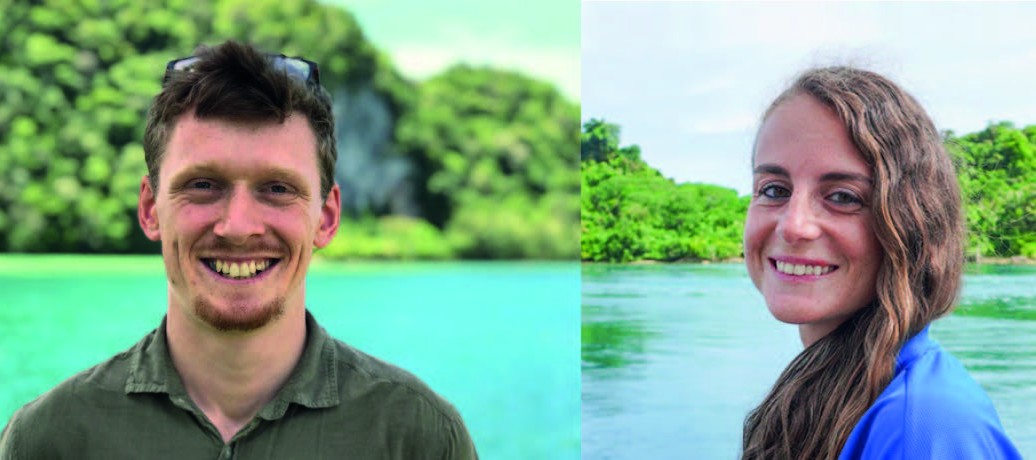- Research
New PICRC study on coral recovery following typhoon damage published in international research journal
Two super-typhoons, Bopha and Haiyan, smashed into Palau in 2012 and 2013 and caused catastrophic loss of corals on some eastern outer reefs. Many sites where corals were previously abundant were left bare, but some reefs have started to recover in the decade since.
A new study of Ngetngod reef, led by Dr. Piera Biondi and Dr. Liam Lachs of the Palau International Coral Reef Center (PICRC) and Newcastle University, respectively, has revealed that recovery occurred rapidly for some types of coral but not for others. While the usual approach to monitoring reef health is to track the percentage of seabed covered with live corals, this study, recently published in the scientific journal, Coral Reefs, went a step further by also measuring the size of each individual coral colony as part of a long-term dataset that PICRC has gathered since 2001. This analysis gave further insights into the coral populations, such as the density of corals and the distribution of different coral sizes.
Coral reefs are facing increasingly damaging disturbances under climate change, including destructive storms and marine heatwaves. They need sufficient time for recovery between these events, but recovery intervals are becoming shorter. The demographic recovery of populations (i.e. having a population with mix of large coral colonies and small coral colonies) is critical for populations to remain viable, yet the time needed for such recovery has remained poorly understood.
As the super-typhoons removed all the coral colonies from Ngetngod reef, an opportunity arose to measure the time needed for recovery. The study focussed on the three most-common branching coral genera (Acropora, Pocillopora, and Stylophora), and found contrasting recovery times.
By 2020, Pocillopora colony density far exceeded pre-typhoon levels. However, despite the recovery of Acropora colony density by 2020, populations remained dominated by smaller colonies. The study shows that demographic recovery varies depending on the life history of the coral. The research indicates that it takes around four years for pocilloporids to recover because this coral genera spawns year-round, but Acropora, which typically have only one spawning event per year, requires more than eight years to recover. Interestingly, the study also demonstrates that tracking coral colony density (i.e. the number of colonies per m2 of seabed) instead of coral coverage can predict recovery two to four years earlier.
This work highlights the insights on coral population dynamics that can be achieved from demographic monitoring. With the new computer tools that automatically measure the size of corals in underwater photos, there is a great new opportunity to improve monitoring efforts to give more detailed information on the health and status of coral populations. The study also showcases the importance of long-term monitoring data to understand how coral populations can recover after acute disturbances like storms or mass coral bleaching.


